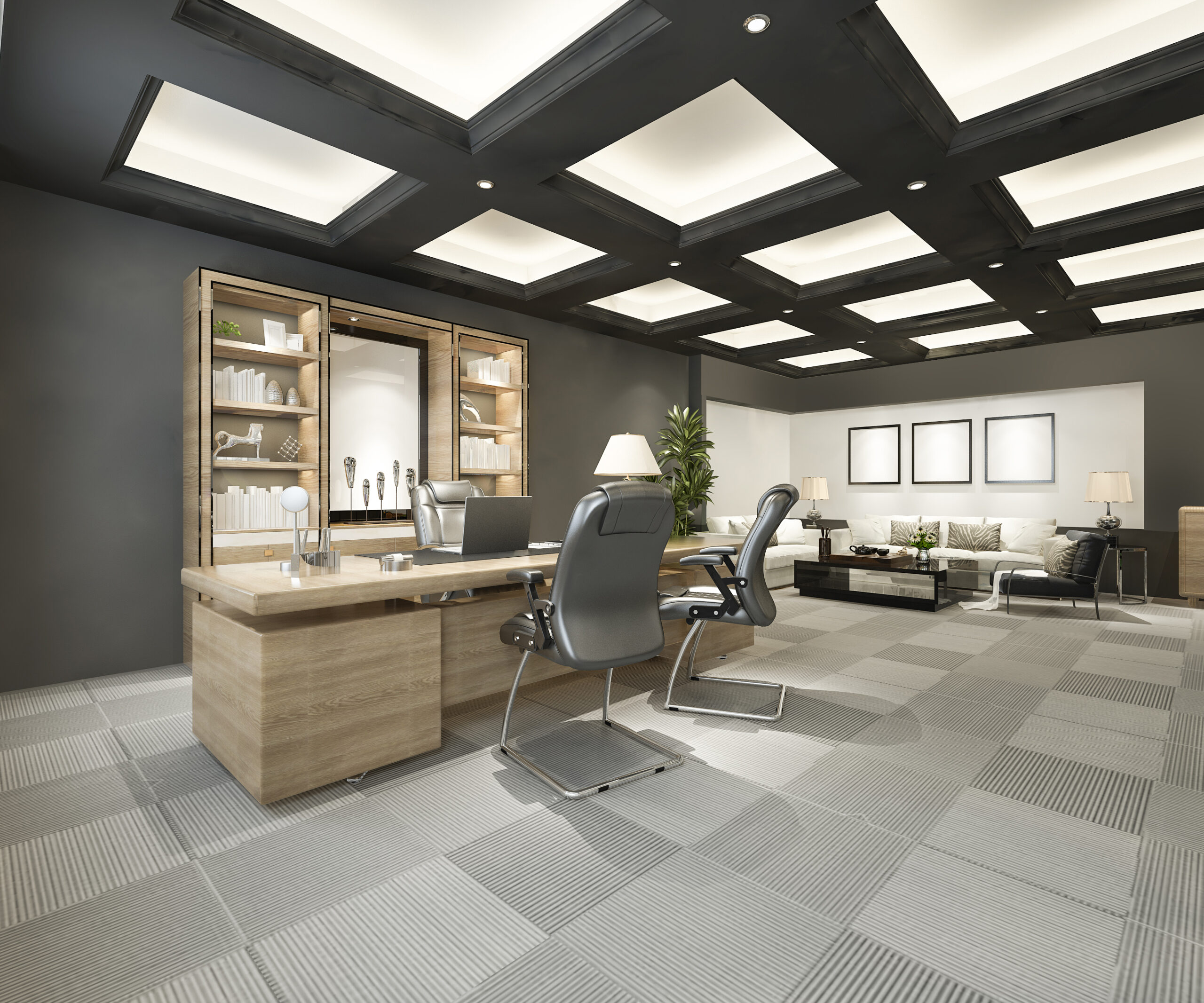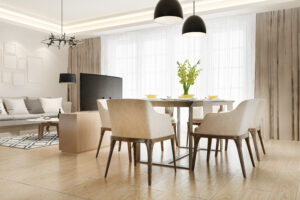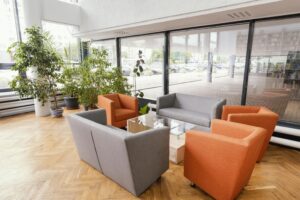Lighting is one of the most powerful elements in interior design — yet it is also one of the most overlooked. You can have beautiful furniture, modern décor, and stylish walls, but if the lighting is poor, the entire space will feel dull, uncomfortable, or incomplete. Good lighting does not just brighten a room; it defines the mood, enhances functionality, and elevates the overall aesthetic.
In both homes and offices, lighting plays a crucial role in how people feel, work, and interact within a space. In this blog, we will explore the importance of good lighting, different types of lighting, and how smart lighting design can transform your environment.
1. Good Lighting Sets the Mood and Atmosphere
Lighting directly affects how a space feels. Soft, warm lighting creates comfort and relaxation, while bright, white lighting creates energy and focus. With the right lighting setup, you can instantly change the atmosphere of any room.
How Lighting Affects Mood
- Warm lighting creates a cozy, calming ambiance
- Cool lighting enhances focus and alertness
- Dimmed lights create a relaxed, peaceful environment
- Spotlighting adds drama and emphasis
- Natural light boosts energy and positivity
This is why lighting is considered one of the main mood-shaping tools in interior design.
2. Enhances the Aesthetic Appeal of Your Space
Lighting has the power to highlight the best parts of your interior. It can make your room look bigger, brighter, and more sophisticated. Good lighting enhances textures, colors, and decorative elements.
Aesthetic Benefits
- Highlights wall textures and wallpapers
- Enhances flooring shine and color
- Makes artwork or décor stand out
- Adds depth and layers to the room
- Creates a high-end, well-designed look
Proper lighting makes your interior appear more professional and visually pleasing.
3. Improves Functionality and Productivity
Lighting is not only about looks — it plays a huge role in everyday tasks. Poor lighting can cause eye strain, headaches, and lower productivity. This is especially important in offices where employees spend long hours working.
Functional Benefits
- Clear visibility for reading, writing, and computer work
- Reduces glare and eye fatigue
- Supports focused work in task-heavy areas
- Helps maintain a healthy work environment
- Better lighting increases accuracy and reduces mistakes
In commercial spaces, functionality is just as important as style.
4. Makes Small Spaces Look Bigger and More Open
One of the biggest challenges in interior design is dealing with small or compact spaces. Good lighting can make these spaces look larger by reducing shadows and brightening corners.
How Lighting Expands Spaces
- Wall-washing lights make walls appear wider
- Bright lighting opens up compact rooms
- Well-placed ceiling lights draw the eye upward
- Mirrors paired with lighting double visual space
- Light-colored bulbs create an airy atmosphere
If you want a small office or room to feel more spacious, lighting is your strongest tool.
5. Adds Style and Character to Interiors
Lighting fixtures themselves are part of décor. The design, material, and placement of lights add personality to your space.
Types of Stylish Lighting Fixtures
- Chandeliers
- Pendant lights
- Track lights
- Wall sconces
- Recessed ceiling lights
- LED strip lights
- Floor lamps
- Table lamps
These fixtures help define the theme of the interior — whether modern, minimalistic, classic, or industrial.
6. Supports Employee Wellness in Offices
Lighting directly impacts mental and physical wellbeing — especially in the workplace. Employees working in poorly lit spaces often feel tired, stressed, or demotivated.
Wellness Benefits
- Encourages alertness and focus
- Reduces stress and fatigue
- Improves mood and motivation
- Supports healthy sleep cycles with bright-day lighting
- Prevents eye strain and migraines
Investing in modern lighting is essential for a healthier and more productive team.
7. Creates Focal Points and Visual Interest
Lighting helps highlight important elements in your space. Whether it’s artwork, architectural features, or decorative walls, lighting draws attention and creates depth.
Popular Focal Point Techniques
- Spotlights on artwork
- LED strips behind TV units
- Downlights above paintings
- Accent lighting on textured walls
- Under-cabinet lights in kitchens
- Backlit panels behind reception desks
These techniques elevate the visual appeal and create a premium atmosphere.
8. Energy-Efficient Lighting Saves Money Long-Term
Modern LED lighting is not only stylish but also economical. It consumes less energy, lasts longer, and reduces monthly electricity bills.
Energy-Efficient Benefits
- LED lights use 75% less energy
- Longer lifespan reduces replacement costs
- Smart sensors turn lights off automatically
- Eco-friendly lighting supports green initiatives
- Efficient lighting reduces heat emissions
This makes LEDs ideal for both homes and commercial buildings.
9. Choosing the Right Lighting for Each Room
Every space has a different lighting requirement. A one-size-fits-all approach does not work in modern interior design.
Recommended Lighting Per Space
- Living rooms: Warm ambient lighting + accent lights
- Bedrooms: Soft and warm lighting for comfort
- Kitchens: Bright task lighting
- Offices: Cool white lights for high productivity
- Reception areas: Decorative accent lighting
- Conference rooms: Adjustable lighting for presentations
- Bathrooms: Bright, shadow-free lights
Customizing lighting according to each area ensures both comfort and efficiency.
Conclusion
Good lighting is not just an accessory — it is a core part of interior design. It shapes how your space looks, feels, and functions. Whether you are renovating your home or designing a professional office, the right lighting can dramatically transform your environment.
From mood creation and aesthetics to productivity and wellness, well-planned lighting design ensures your space looks premium and performs efficiently.




